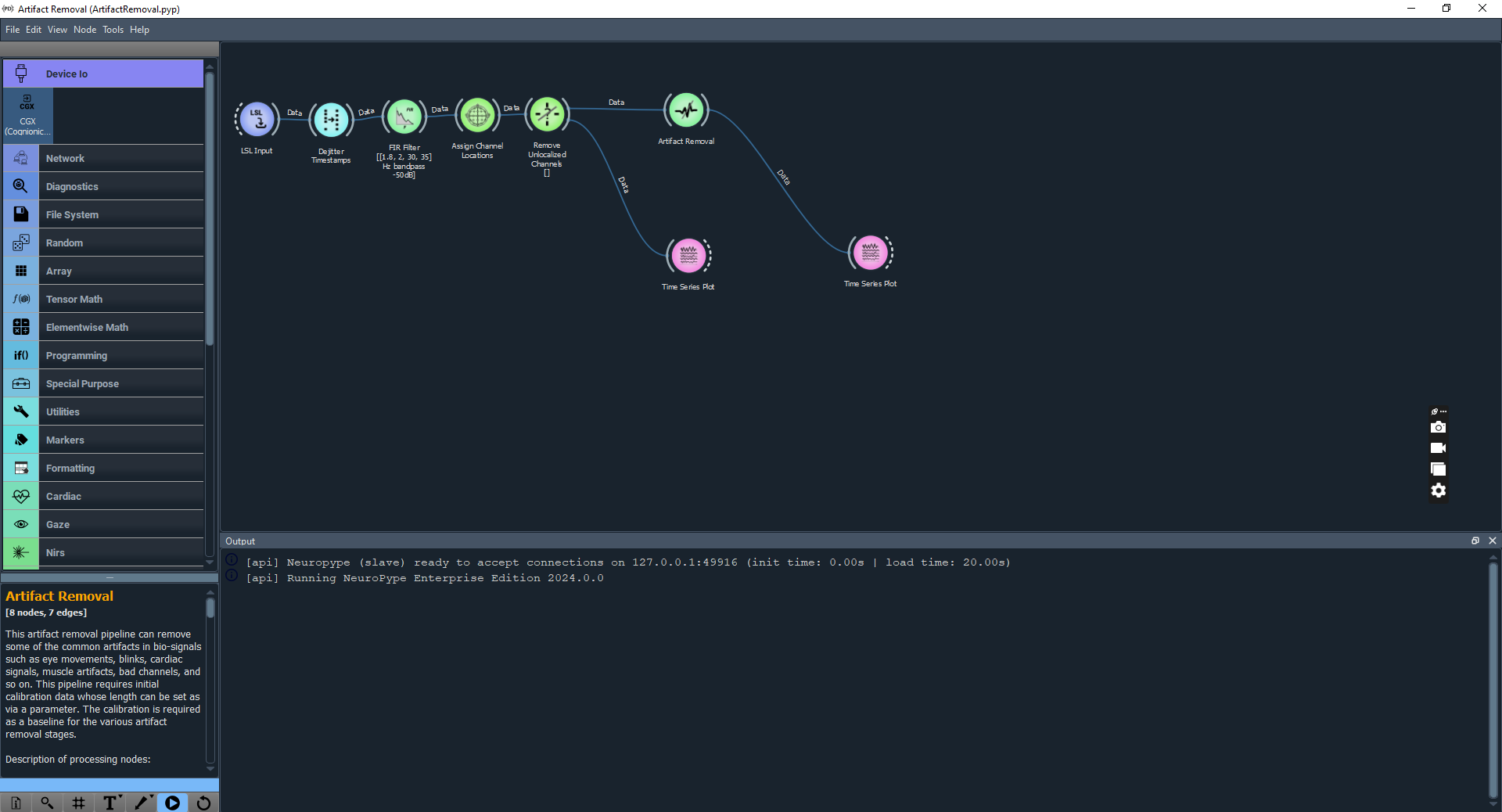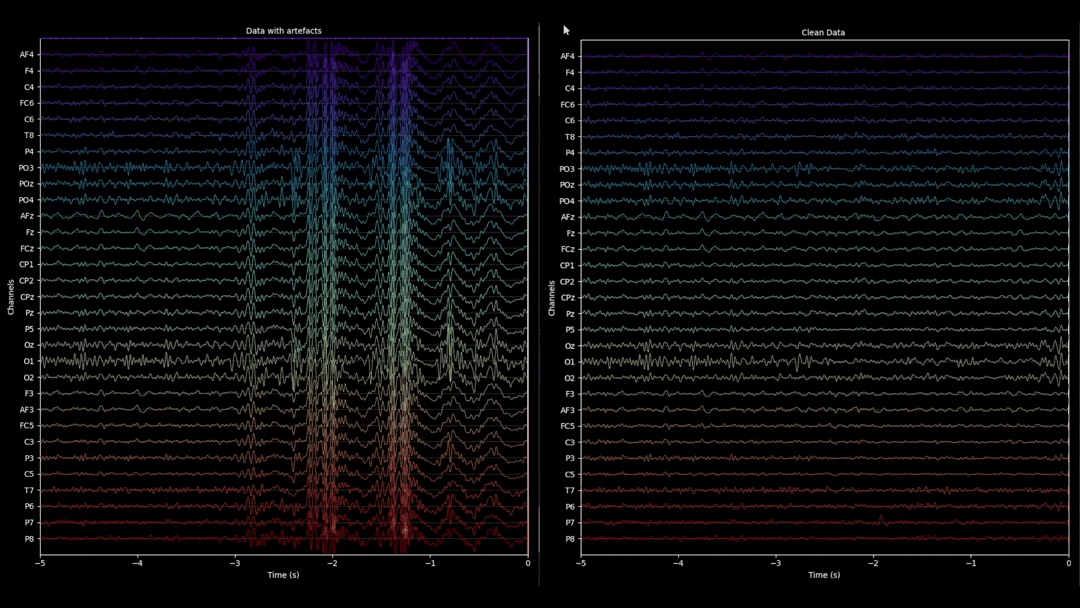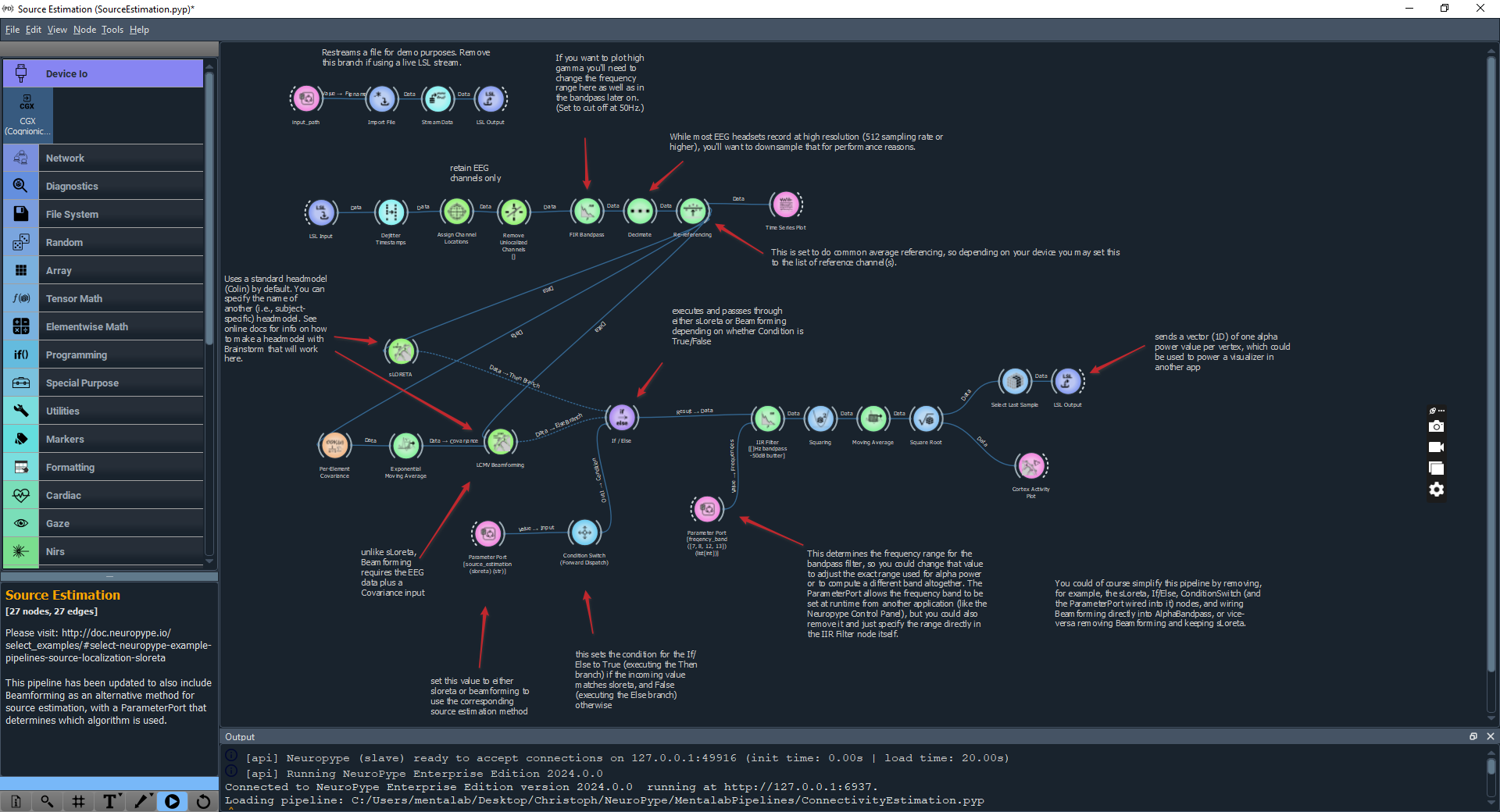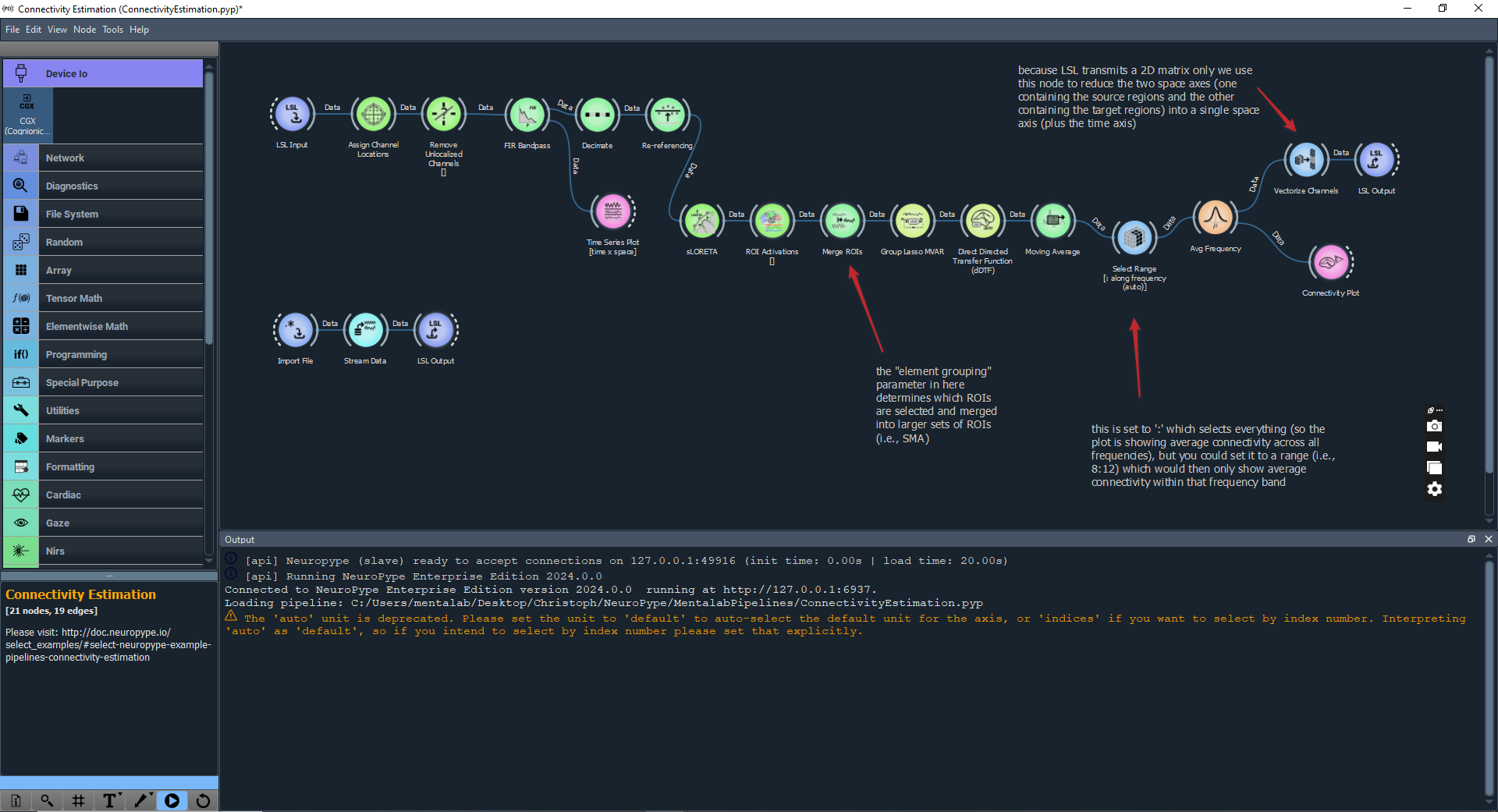NeuroPype
Mentalab’s mobile EEG amplifiers integrate seamlessly with NeuroPype, a powerful and flexible platform for real-time brain data processing and analysis. This page provides an introduction to using your Mentalab data with NeuroPype, highlighting key capabilities and recommended practices for both offline analysis and real-time streaming.

How to Use Mentalab Data with NeuroPype
You have two primary methods for getting Mentalab data into NeuroPype:
-
For Offline Analysis (using .bdf files):
- Record your data: Conduct your EEG recording using your Mentalab device, ensuring the data is saved in the .bdf format.
- Prepare your NeuroPype environment: Ensure you have NeuroPype installed and configured.
- Import Mentalab .bdf data: Use NeuroPype’s data import functionalities (e.g., a
BDFReadernode) to load your Mentalab .bdf file into your pipeline. (Specific import node details can be found in the NeuroPype Documentation).
-
For Real-time Streaming (using LSL):
- Start Mentalab LSL Stream: Ensure your Mentalab device is configured to stream data via LSL.
- Prepare your NeuroPype environment: Ensure you have NeuroPype installed and configured.
- Import LSL Stream in NeuroPype: Use NeuroPype’s LSL import functionalities (e.g., an
LSLStreamReadernode) to connect to the active Mentalab LSL stream within your pipeline. This will allow for real-time processing. (Specific LSL node details can be found in the NeuroPype Documentation).
-
Utilise Mentalab-optimised pipelines: Access and integrate the streamlined artefact removal, source localisation, and connectivity estimation pipelines designed for Mentalab data within your NeuroPype workflow, whether processing offline files or live streams.
Data Import Options: .bdf Files and LSL Streaming
Mentalab devices offer versatile options for getting your data into NeuroPype:
-
Real-time Streaming with Lab Streaming Layer (LSL): For live data acquisition and real-time processing within NeuroPype, Lab Streaming Layer (LSL) is the easiest and most robust method. Mentalab amplifiers support LSL, allowing you to stream EEG data directly from your device to NeuroPype pipelines as it is being recorded. This is ideal for applications requiring immediate feedback or continuous monitoring.
- Benefits of LSL: LSL provides a standardised way to stream time-series data from various sources (like Mentalab devices) to various processing applications (like NeuroPype), ensuring precise synchronisation and easy integration.
-
Offline Data with .bdf Files: Mentalab devices record data in the .bdf (BioSemi Data Format) file type, an open and widely supported file format. It is the 24-bit version of the common 16-bit .edf (European Data Format). For optimal compatibility and ease of use with NeuroPype, we strongly recommend using the .bdf format for offline analysis:
- No conversion required: BESA can directly read and import .bdf files generated by Mentalab devices. This eliminates the need for any additional file conversion steps, saving you time and reducing potential data integrity issues.
- Immediate access: Once your Mentalab recording is complete and saved as a .bdf file, you can immediately open and begin analysing your data within NeuroPype.
Streamlined NeuroPype Pipelines for Mentalab Data
NeuroPype’s flexible pipeline architecture allows for advanced processing of Mentalab EEG data. We have developed and tested streamlined pipelines that build upon common NeuroPype functionalities, tailored for Mentalab recordings. These pipelines cover crucial analysis steps:
1. Artefact Removal
Leveraging NeuroPype’s robust signal processing capabilities, our pipelines simplify the process of identifying and removing unwanted artefacts from your Mentalab EEG data. This ensures cleaner signals for more accurate analysis.


For general NeuroPype artefact removal examples, refer to: NeuroPype ERP Classification Example
2. Source Localisation
Gain insights into the neural generators of your Mentalab EEG signals. Our NeuroPype integration facilitates source localisation, allowing you to estimate the intracranial origin of electrical activity. We recommend using data files with


For general NeuroPype source localisation examples, refer to: NeuroPype sLORETA Example
3. Connectivity Estimation
Explore functional relationships between different brain regions. Our pipelines support connectivity estimation using your Mentalab data, providing a deeper understanding of brain networks.


For general NeuroPype connectivity estimation examples, refer to: NeuroPype Connectivity Estimation Example
For comprehensive documentation on NeuroPype’s functionalities and detailed instructions on building and running pipelines, please refer to the official NeuroPype Documentation.